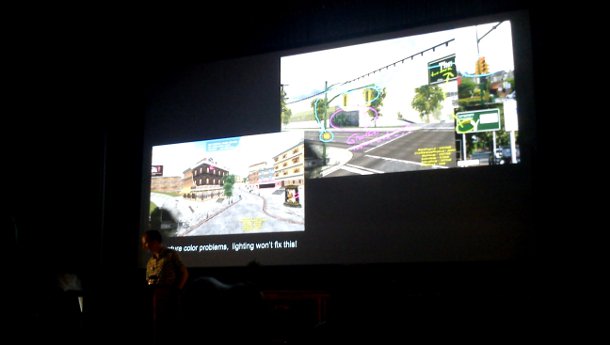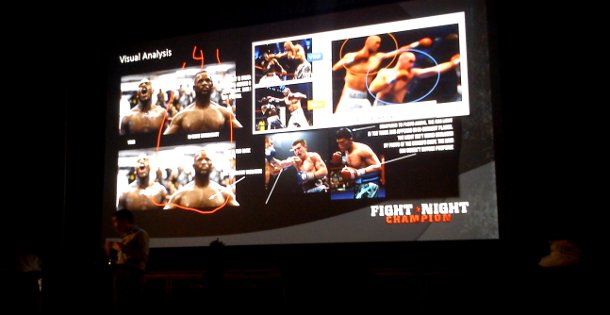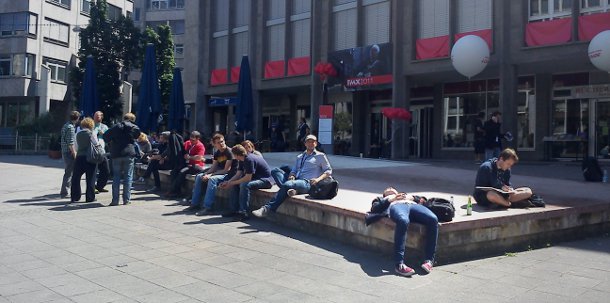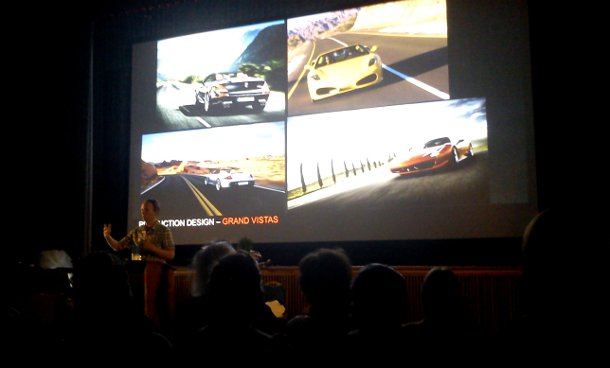fmx 2011: Friday’s news
In the last of our reports from Europe’s premier CG festival, Jim Thacker rounds up the highlights of the final day, from Harry Potter to mainland China – and discovers why games still have much to learn from visual effects.
As the crowds finally thinned out, and fmx 2011 began to wind down, there was finally time to pause and take stock of this year’s show.
During the past week, 3,500 people passed through the doors of Stuttgart’s Haus der Wirtschaft each day, with many times that number following the live streams on the festival’s website.
Over 250,000 tuned in to independent producer Kevin Geiger‘s presentation on Chinese animation alone, almost bringing fmx’s servers to their knees.
But though the venue was finally beginning to empty, the show saved many of its best sessions for last. The morning saw a celebration of all things Harry Potter, with a presentation from Nico Scapel on Framestore’s work on Dobby and Kreacher followed by a two-hour session bringing together six of the facilities that have worked on the movies over the decade.
Meanwhile, the festival’s games programme was in full swing, with technical presentations from Crytek’s Ivo Herzeg on animation techniques in Crysis 2; and from Confetti Special Effects‘ Wolfgang Engel on his work on the Intel RawK demo.
Used to showcase the graphical capabilities of Intel’s new hybrid CPU/GPU Sandy Bridge chips, RawK includes some surprising features for a demo intended to run on low-end integrated hardware.
Its innovations include a deferred rendering system similar to that used on the S.T.A.L.K.E.R. titles; and a screen-space material system that performs all materials calculations as a post effect: similar to, but more generally applicable than, that used on Red Dead Redemption.
Although you could hardly mistake the result for a triple-A title, RawK is a reminder of just how fast games technology is evolving.
However, according to Henry LaBounta, senior art director at Electronic Arts, the key to better-looking games is not necessarily better technology.
“It’s not about subsurface scattering and all those things,” he said. “There are some real basic things you can do to help.”
LaBounta, a Hollywood veteran – and Oscar nominee for his work on Twister – applies his knowledge of basic visual effects principles to games he is called on to troubleshoot at EA.
In particular, he singled out poor use of contrast as a key problem, screening a series of promotional images downloaded from IGN to illustrate his point.
“If you were a DoP and you showed these in dailies, it would probably be your last day on the movie,” he commented, gesturing at the uninspiring, muddy-looking grabs. “If this were music, it have no bass or treble: it’s all mid-range.”
Often, LaBounta believes, the root cause is poor texture work. Since the shaders used in games are relatively simple, “90% of the end result” is diffuse colour.
“Games teams don’t use reference material well,” he said. “Often, they’ll say, ‘Oh yeah, we printed [the reference images out] and put them on the wall. I don’t want to see them on a crappy office printer. I want to see them on [everybody’s] screen.”

Inconsistency in diffuse textures is responsible for most look dev problems in games, argues EA's Henry LaBounta.
If texture errors are not caught early, lighting changes are applied like “Band-Aid after Band-Aid”, in a futile attempt to fix the problem.
LaBounta makes artists on titles like the recent Need For Speed: Hot Pursuit adopt VFX techniques, shooting texture reference against a Macbeth colour chart, and using this to standardise the images in Adobe Bridge to eliminate the effect of variation in exposure or camera colour profile.
Once shot, textures are applied using a linear, gamma-correct workflow. “If you’re a compositor, the first thing you learn is to linearise all of the elements before you multiply them,” he commented. “But it’s new to games.”
Making movies for PlayStation 3
LaBounta’s colleague TJ Galda, senior CG supervisor at EA Canada, was equally certain of the need to learn from Hollywood.
His most recent project, Fight Night Champion, fuses the hardcore gameplay of previous Fight Night titles with 42 minutes of cinematic animation to create the game’s ‘Champion Mode’.
Galda ran through his film-inspired production process, which included detailed pre-viz, networking all of the PlayStation 3s in the studio to create a renderfarm and hiring three editors to cut the raw footage together.
The results informed the title’s regular gameplay, with Galda pointing to a series of materials and rigging issues that were identified by comparing in-game footage to the rendered material.
Attention to detail seems to have paid off. Fight Night Champion currently has a score of 84% on Metacritic, while the game’s trailer even takes the bold step of intercutting gameplay with footage of a live actor.

EA's TJ Galda demonstrates the effect of a movie-style workflow on the look of Fight Night Champion.
This meeting of the worlds of movie-making and game design seemed an appropriate note on which to leave a show that, more than any other, brings together the disparate tribes that make up the CG community: pre-rendered and real-time, artistic and technical, professionals and students.
As Geiger, a six-year veteran of fmx, put it: “You see conferences at a high level, and you see conferences with intimacy. It’s very rare to have both.”
And with this year’s festival featuring sessions presented by board members of some of the world’s biggest studios, there could be no doubt that fmx is now operating at a very high level indeed.
“For years, it’s been the industry’s best-kept secret,” commented Geiger. “But now the secret is finally out.”



